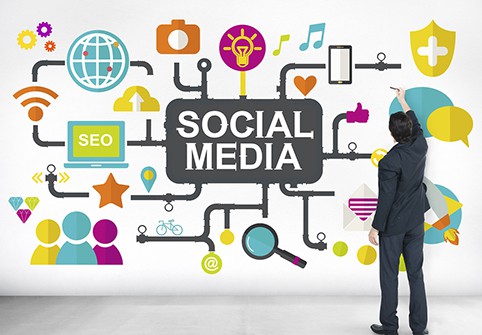The Educator’s Guide to Social Media

It’s a question we at Getting Smart hear often — “As an educator, should I even be on social media at all?” In most cases, our answer is a resounding YES! That said, there are definitely guidelines anyone working in education should follow when participating. As a public figure and role model for your students in real-life, it’s important you maintain that image online as well. Your participation is obviously going to look different than a student’s or parent’s, but that doesn’t mean you can’t enjoy it and use it to enhance your professional image.
One of the best things about joining the social media movement is also the a unique opportunity to touch lives both online and offline that your predecessors didn’t and most other professions still don’t have. So take advantage of this amazing time in our rapidly expanding digital world and grow your social media skills right alongside your students, providing a positive influence every step of the way. To get started, read the following social media guide tailored especially for educators.
Larry Magid
Most middle and high school students are on social media as are an increasing number of parents. But it’s not uncommon for educators to shy away from using it in class or even in their personal and professional lives.
But there are a great many advantages of social media both as a classroom tool and to enhance your professional reputation. Sure there are risks, but they are manageable and easily outweighed by the rewards.
So, if you or any of your colleagues are on the fence regarding social media, read on and check out ConnectSafely.org’s free new online booklet, The Educator’s Guide to Social Media. Written by Kerry Gallagher and myself, the guide answers the basic questions of how you can safely use social media in class and for professional development and how to maintain both student and personal privacy.
Of course, many students are using Twitter, Facebook and Instagram, but so can teachers to share learning tidbits with students and show off excellent student work with the student’s, and in some cases, parent’s permission. YouTube is a fabulous way to find great material and share the material your students create. And student blogs enable students to share what they create with others, which enhances their own professional reputation. But there are other tools teachers might not know about, like Voxer, which lets you use your voice to share ideas with colleagues or communicate with parents. Or Versal that helps teachers create online courses.
Reputation management
Reputation management is on the minds of everyone who uses social media and educators are at special risk because they are public figures of sorts. Not just with their students but with parents and the community. It’s important for teachers be very careful about their privacy settings and what they post. Some teachers have separate personal and professional social media accounts and — if you’re using Facebook for classroom activities — it’s a very good idea to create special class pages or Facebook groups to keep your educational use separate from your personal use.
Student privacy
Protecting the privacy of your students isn’t only right, it’s the law. So be very careful not to run afoul of the Family Educational Rights Act (FERPA) and other data protection laws. When it comes to social media, be sure to get parent and student permission before showing off any student work, and if you plan to use tools like YouTube, Vine or Periscope, make sure that any media release forms signed by parents also cover video. If in doubt, check with your administration.
Unfortunately, many schools block social media access from machines connected to the campus network. Of course BYOD students can get access through cellular networks, but you may have trouble reaching Facebook, Twitter and other services from school devices. There is a law, called the Children’s Internet Protection Act (CIPA), that requires schools to block obscenity and other material “harmful to minors,” but there’s nothing in the law that says schools should block social media. If your school does, it’s probably a local policy or the default setting on the filter that was never changed. If you have good reasons to use social media in class, talk with your administration about lifting the filters either for everyone (ideally) or at least your classroom. Of course, you should be careful to make sure students only access appropriate content. If you use YouTube, consider setting it up in “restricted mode.” YouTube doesn’t allow pornography, but there may be videos that are inappropriate for student viewing in class.
As we share in The Educator’s Guide to Social Media, you don’t have to use social media and you certainly don’t have to use every service and app out there or spend a great deal of time on social media. You should, however, be aware of the services and apps your students are using. How you approach it, who you friend or follow, how often (if ever) you post and how often you check in is completely up to you and, as with lots of good things in life, there may be times when you need a break from social media. The same is true for your students. They shouldn’t be required to post or share their work if they don’t want to.
Keep in mind that, when used thoughtfully, social media can provide opportunities for professional growth, enhanced home-school communication, and conversations that allow learning to continue beyond allotted class times. If and when you choose to get started – or start over – with social media, remember that general professional and personal rules of etiquette hold as true online as they do in person.
For more on social media, check out:
- Build Your Brand: How a Positive Social Media Presence can Lead to a Career
- Kids, Smart Phones, and Social Media: 6 Rules for Success and Safety
- 5 Social Media Must Knows for Every Teacher
Larry Magid, CEO ConnectSafely.org and co-author of The Educator’s Guide to Social Media. Follow Larry on Twitter, @larrymagid.








Sophia
Awesome articles for students to use social media. Students should use social media in a good ways rather then flirting with girls on social media. Social media is a great tool for communication and sharing knowledge so use it in a proper way.